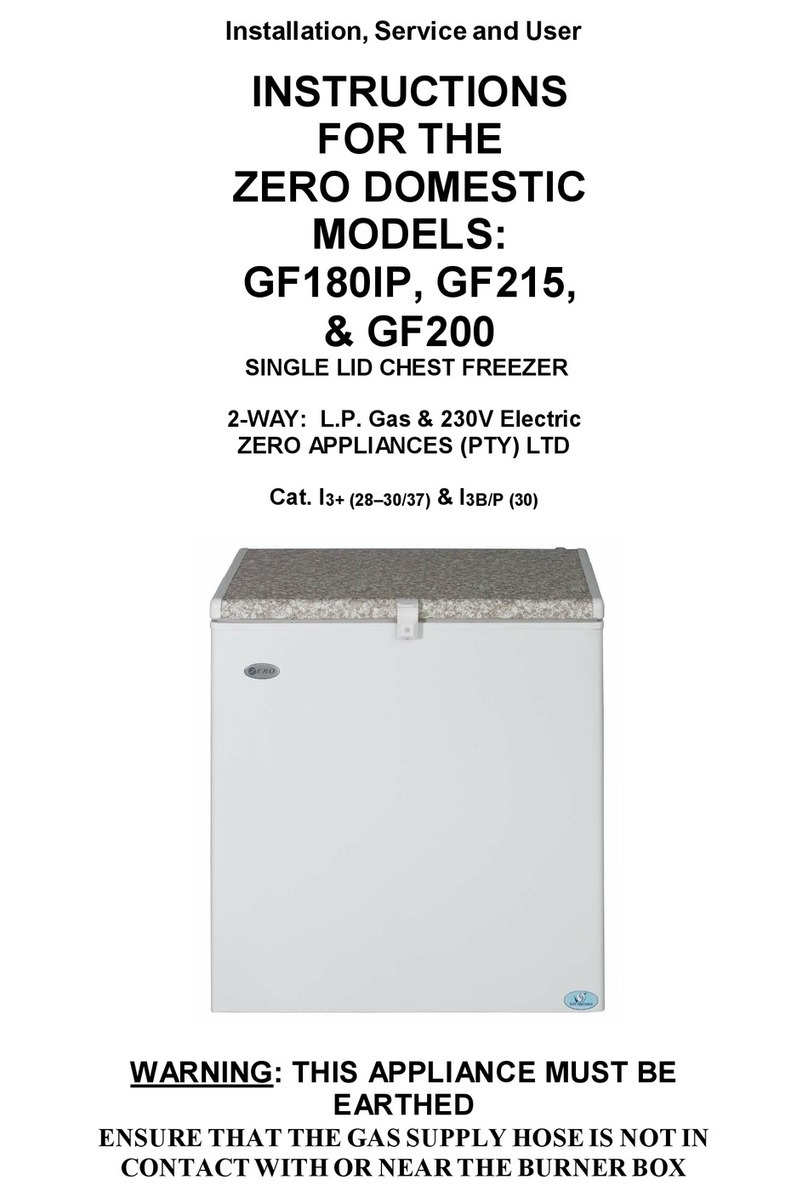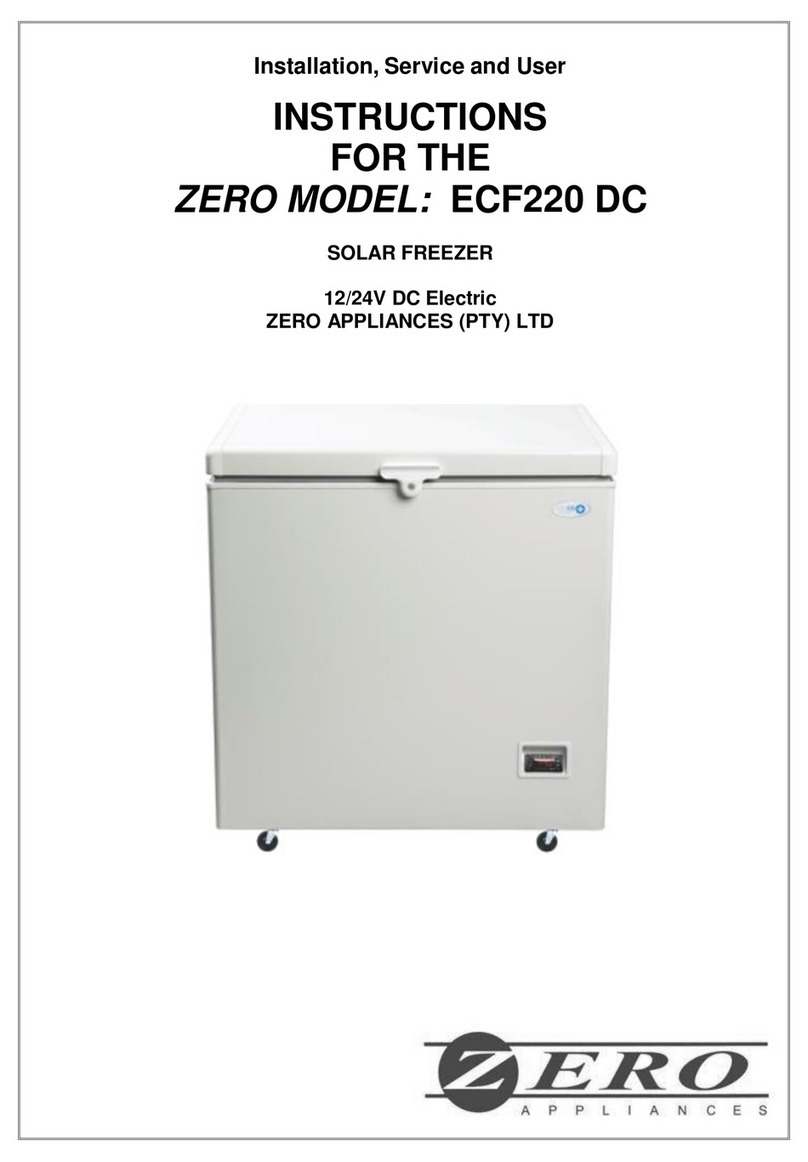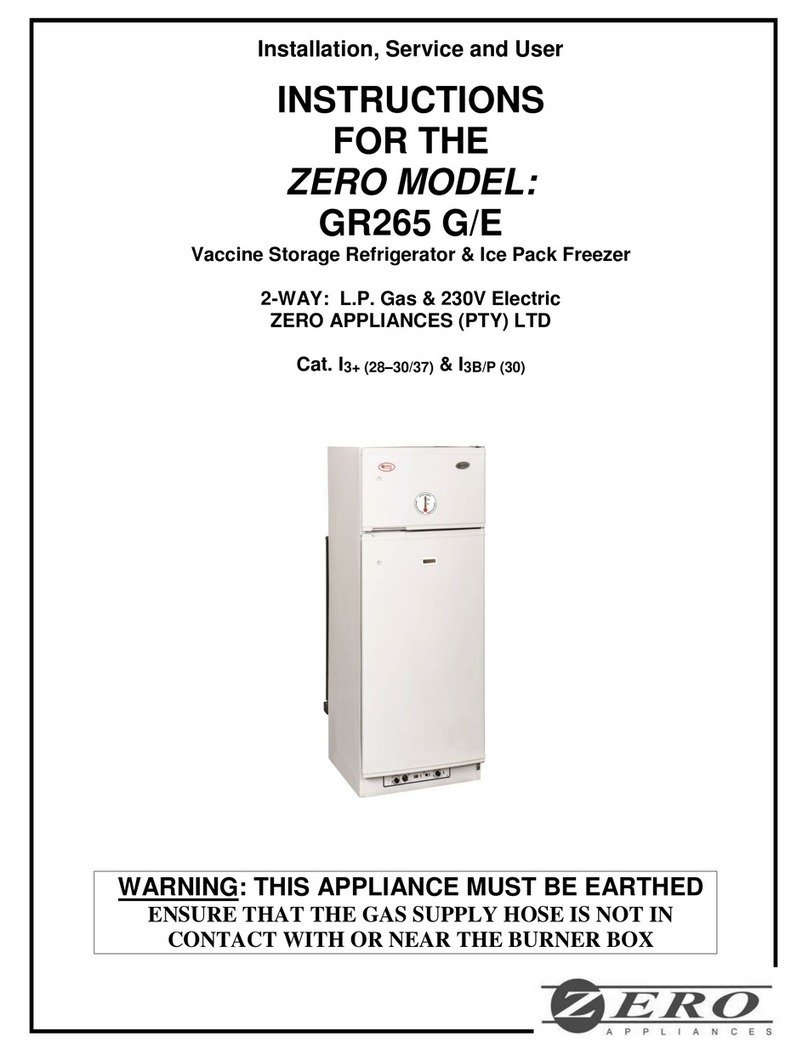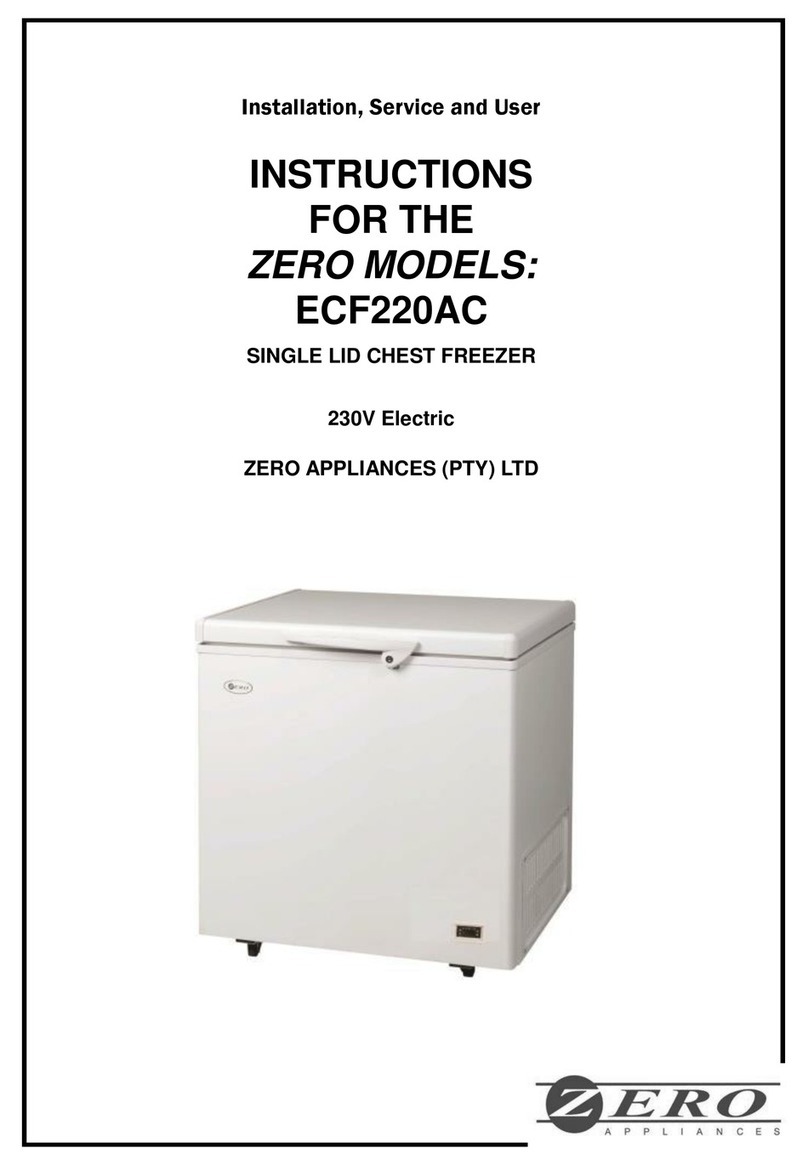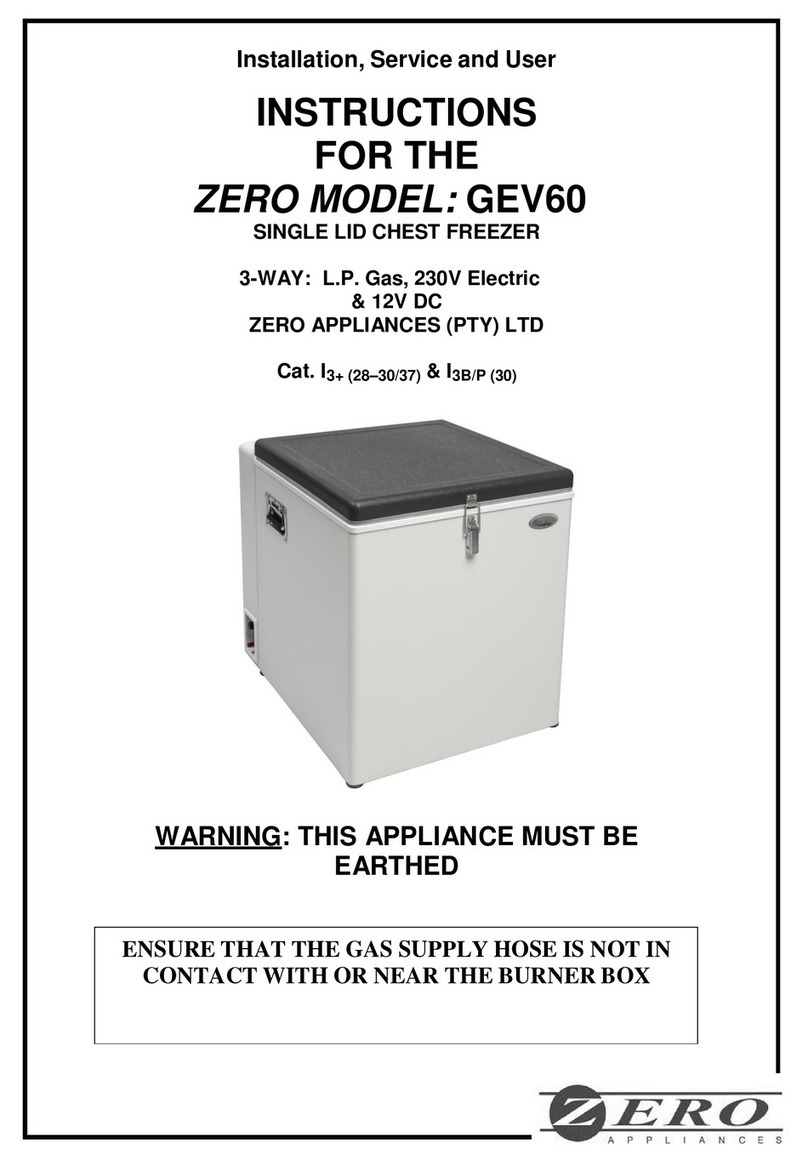8
Author: Rudi Version: 2.1 Revision: 1.2 Revision Date: June 2019
8. Too many products are loaded into the freezer at one time – air must be able to
circulate freely.
9. The lid is not properly closed or the lid seal is defective.
10. The baffle has not been inserted into the chimney.
11. The absorption unit is leaking. In the case of a visible leak, there will be traces
of a yellow deposit at the point where the ammonia is escaping. If there is a
leak on the evaporator inside the cabinet, a smell of ammonia may be
noticeable inside the bin. If a leak is detected, under NO circumstances should
you try to repair it, as the unit is pressurized with hydrogen and may explode if
welding is attempted on the unit. Call a qualified service technician. Turn off
the gas or electric supply, and then empty the appliance. If it is in a small room
or in sleeping quarters and the smell of ammonia persist remove the appliance
to a well ventilated area. Do not try to use it.
12 There may be a drop in supply voltage, electric function only.
13. If the flame is not burning after releasing the fail-safe valve knob according to
the instructions, there may be two faults, these being:
a) The magnet in the flame failure device (3) is faulty.
b) The thermocouple feeler point (6) may not be in the flame properly.
To rectify this, loosen the thermocouple nuts (7) and adjust the thermocouple
until the point is over the second row of the small holes in the burner and re-
tighten the nuts on the thermocouple. Repeat the starting instructions and
lighting procedure as laid out on page 5. (USER OPERATING INSTRUCTIONS
–TO START GAS OPERATION)
14. If the appliance is still not working properly, call a qualified service technician to
repair it.
SOME USEFUL HINTS
Make sure that:
1. Defrosting is carried out periodically.
2. The appliance is clean and dry with the lid open when it is not to be used for
some time. If the appliance is fitted with a locking device – remove key to
prevent accidental locking.
3. Liquids or items with strong odours are well packaged.
4. The ventilation of the absorption unit is not obstructed.
5. You do not touch the absorption unit while it is in operation as parts of it will be
extremely hot.
6. You check the condition of the gas supply tube regularly:
a) End fitting in good condition.
b) Overall appearance etc.

